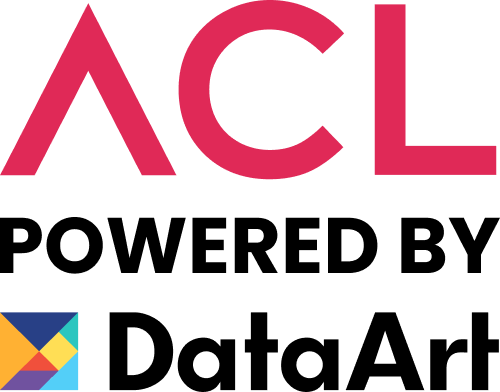When you're managing nearshore software development, the right tools can make all the difference. With nearshore teams offering time zone compatibility, cost savings, and access to top talent, more companies are choosing this model for software development. In fact, nearshoring has grown by 60% in the last five years, according to Deloitte. To maximize your nearshore team’s potential, you'll need tools that streamline project management, foster real-time communication, and enhance collaboration across borders. That’s why we’re dedicating this article to the best tools for nearshore software development in 2024, focusing on everything from communication platforms to version control systems. Ready to find out which tools can help your nearshore team succeed? Let’s dive in.
What Is Nearshore Software Development?
Nearshore software development refers to outsourcing software development tasks to teams located in nearby countries, typically within the same or similar time zone as your company. This approach provides the benefits of outsourcing - such as cost efficiency and access to specialized talent - while minimizing the communication and collaboration challenges that arise when working with teams across distant time zones.
One of the key advantages of nearshore development is the ease of real-time collaboration. Unlike offshore models, where time differences can create delays, nearshore teams work in sync with your business hours. This can significantly reduce project turnaround times and improve overall productivity. According to a study by Accelerance, businesses report a 15-30% increase in productivity with nearshore teams compared to offshore alternatives.
Cultural alignment is another critical factor. Since nearshore teams are often from neighboring countries, they tend to share similar cultural values and business practices. This can result in smoother communication and fewer misunderstandings during the project lifecycle. Many companies find that this proximity fosters stronger team relationships and quicker problem-solving.
Ultimately, nearshore software development strikes a balance between the cost savings of outsourcing and the operational efficiency of working with a local team. It’s an approach that offers flexibility without sacrificing quality or collaboration, and that’s the reason so many organizations decide to hire nearshore developers in 2024.
How Does the Use of Nearshore Development Tools Help Your Business?
The right nearshore development tools can transform how your business manages outsourced teams. By streamlining communication, project management, and collaboration, these tools ensure your nearshore teams operate efficiently, no matter where they’re located.
For starters, there are tools for nearshore software development that can help you manage projects more effectively. With their real-time tracking features, you can monitor progress, set deadlines, and allocate resources across multiple teams, all while reducing the risk of delays. Research by PMI found that 77% of high-performing teams use project management software, showing its impact on meeting project goals. Communication is also key in any remote setup, and leveraging certain platforms makes it easier to stay connected. These tools allow your nearshore teams to collaborate in real-time, ensuring quick decision-making and reducing misunderstandings. In fact, a study by Forbes revealed that companies using real-time communication tools saw a 25% boost in team productivity.
Lastly, using tools optimized for version control ensures code consistency and reduces errors. Nearshore teams can seamlessly collaborate on code, review changes, and deploy updates without disrupting the workflow. This results in faster turnaround times and fewer technical issues, giving your business a competitive edge. Of course, incorporating these tools into your nearshore development strategy will take some strategic planning, but it can significantly improve your team’s efficiency, communication, and overall project success.
4 Key Tools for Nearshore Software Development Teams
1. Jira:
Jira is a widely-used tool for project management, especially in Agile environments. It allows you to track tasks, manage sprints, and prioritize work in real-time. For nearshore teams, Jira’s transparency and ability to monitor progress remotely make it a go-to solution. A report by Atlassian shows that over 65,000 companies use Jira to streamline project workflows, reducing project delays by up to 23%.
2. Slack:
Slack is one of the most popular communication tools for distributed teams. With real-time messaging, file sharing, and integration with other tools like Jira and Trello, it enhances daily communication for nearshore teams. Studies show that companies using Slack report a 32% improvement in internal communication and faster project resolutions.
3. GitHub:
GitHub is a crucial tool for version control in nearshore development. It allows teams to collaborate on code, review changes, and ensure consistency across the development process. With 94 million developers worldwide, this tool is certainly the industry standard for managing distributed codebases, making it indispensable for nearshore projects.
4. Zoom:
Zoom’s video conferencing capabilities enable seamless virtual meetings with nearshore teams. From daily stand-ups to in-depth project discussions, Zoom ensures face-to-face communication, which strengthens team relationships and minimizes misunderstandings. According to TrustRadius, businesses using Zoom saw a 14% increase in team collaboration efficiency.
How to Choose the Right Tools for Your Nearshore Team
We’ve shared with you the tools you 100% should have when you’re investing in nearshore software development in 2024, but there are many other ones you can leverage - as long as you pick them according to your team’s real needs. Now, we understand this might pose a challenge, as choosing the right tools for your nearshore team can make or break the success of your software development projects. With so many options available, it’s crucial to select the ones that align with your team’s dynamics, workflows, and long-term goals. Here’s our framework to guide you:
1. Prioritize Compatibility with Agile Methodologies
If your team follows Agile practices, choose tools that support flexibility and iterative progress. Tools like Jira and Trello are designed to handle Agile frameworks, allowing you to manage sprints, backlogs, and daily stand-ups with ease. In fact, Agile project management improves project success rates by 28%, according to PwC.
2. Focus on Integration
Your tools should work together seamlessly to avoid disrupting workflows. Look for platforms that integrate well with each other, like Slack’s integration with Jira or Zoom’s compatibility with project management tools. Integrated systems ensure smoother communication and more efficient data sharing across your team, reducing errors and time wasted on switching between platforms.
3. Evaluate User Experience
Ease of use is essential when selecting tools for your nearshore team. Complicated tools can slow down productivity and frustrate team members. A user-friendly interface leads to quicker adoption and better collaboration. According to a McKinsey report, teams that leverage intuitive tools see a 25% increase in productivity.
4. Consider Security Features
For software development teams, security is critical. Look for tools with robust security features such as encryption, multi-factor authentication, and audit trails. This is especially important if your team handles sensitive client data or proprietary code. A study by IBM found that companies with strong security practices reduced breach costs by 40%.
Quick Tool Implementation Tips For a Unified Development Workflow
1. Centralize Communication and Collaboration
To streamline your nearshore development workflows, it’s best to ensure that your communication and project management tools are fully integrated. For example, linking Slack with Jira allows team members to receive project updates directly in Slack channels. This reduces the need to switch between platforms and keeps everyone in the loop. Research from Forrester shows that well-integrated collaboration tools can boost productivity by up to 20%.
2. Automate Version Control and Deployment
Using GitHub or GitLab with automated CI/CD (Continuous Integration/Continuous Deployment) tools like Jenkins or CircleCI helps unify the development process. These integrations allow developers to push code changes, run automated tests, and deploy updates in one smooth pipeline. Automating these tasks can speed up delivery times and reduce human errors, saving companies up to 20-30% on development costs, according to a study by DZone.
3. Ensure Cross-Tool Reporting
Having a unified reporting system across your tools is key to tracking progress and spotting bottlenecks. Tools like Asana and Trello, for instance, can integrate with analytics software to provide real-time insights on project timelines and team performance. According to Gartner, companies that utilize integrated reporting tools experience a 30% improvement in decision-making speed.
Ready To Leverage Nearshore Software Development?
At ACL, we specialize in helping businesses build high-performing nearshore development teams, and we can provide expert guidance on taking your current development capabilities to the next level - including selecting and integrating the best tools for your unique needs. With proven results and years of experience, our nearshore team ensures that your projects run smoothly, boosting productivity and cutting costs. Reach out today to schedule a free consultation and discover how we can optimize your nearshore development strategy!






